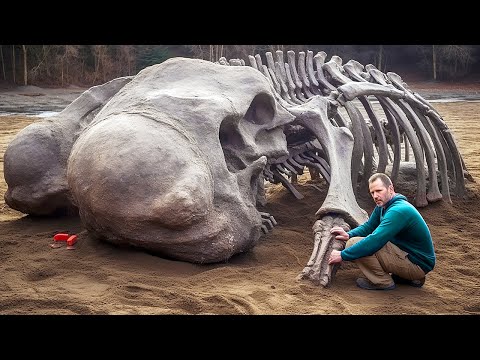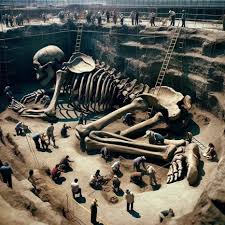REVEALING ANCIENT TITANS”: Astonishing Archaeological Finds Uncover Enormous Skeleton
The title “REVEALING ANCIENT TITANS”: Astonishing Archaeological Finds Uncover Enormous Skeleton” is a dramatic claim that, while captivating, often falls into the category of sensationalism and misinformation. Stories of giant human skeletons have been a persistent feature of folklore and hoaxes for centuries, with the public’s fascination often outstripping scientific fact. While real archaeological discoveries of exceptionally tall individuals have been made, none have supported the fantastical idea of a race of “ancient titans” or giants.

The most common real-world explanation for such claims is the misidentification of large animal remains. For instance, in the 17th century, large bones found in France were claimed to be from a giant king but were later identified as belonging to an extinct elephant relative. Similarly, ancient Greeks often interpreted the fossilized bones of mammoths and other megafauna as evidence of the giants from their myths. The long bones of these creatures can bear a superficial resemblance to human bones but on a much larger scale, leading to these historical misinterpretations.

While the notion of giant human skeletons is a myth, there have been discoveries of individuals who were exceptionally tall for their time. For example, archaeologists in China found 5,000-year-old skeletons of men who were unusually tall for their era, with some measuring over 1.9 meters (6 feet 3 inches). While this would have made them “giants” among their contemporaries, it is a far cry from the mythical 8-10 foot skeletons often reported in sensationalized accounts. These genuine discoveries, while not as dramatic, offer valuable scientific insights into the diet, health, and social status of ancient populations.
